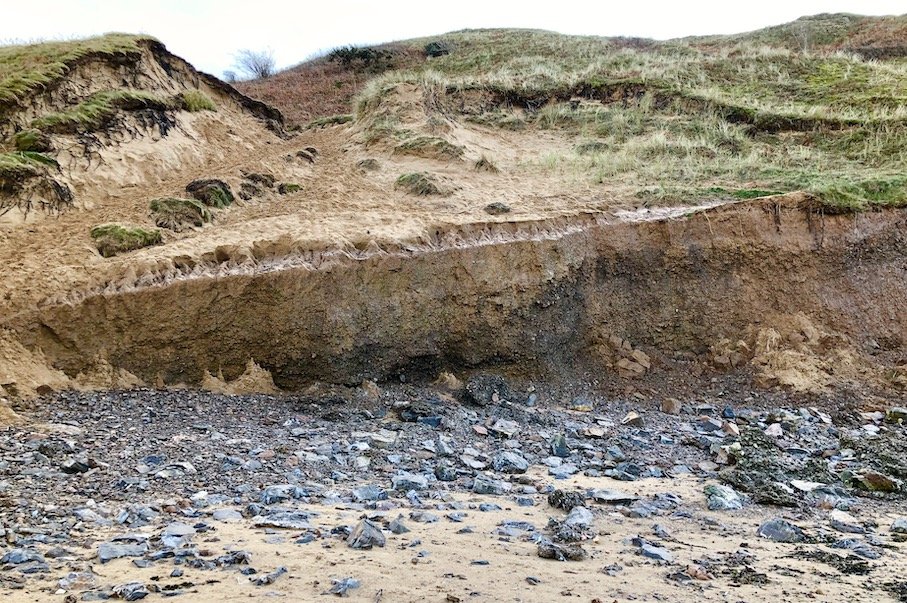Wandering through dunes down to the sea is something I enjoy very much at any time of year. Alive with birds, insects and plant life there is much to observe in this diverse coastal ecosystem.
Sand dunes are dynamic, tempestuous and transient entities which are both created and eroded by the same natural forces. Wind, rain and waves are responsible for constantly shifting and shaping loose sand, sometimes on a monumental scale.
Dunes help to form a protective barrier between sea and land and thus play an important role in the slowing of coastal erosion. The stabilisation of sand dunes is therefore of crucial significance, not least because the frequency and severity of storms is now increasing exponentially.
It is well known that nature is a force to be reckoned with in its power for destruction, but nature is also remarkable in its ability to provide organic solutions. One such example is the prolific coastal plant called Marram grass (Ammophila arenaria). Its densely matted root system plays a vital role in helping to anchor loose sand, creating much needed stability within the dune system in a wholly natural and environmentally friendly way. This also allows other species to colonise and thrive resulting in a unique and diverse habitat of enormous value close to the sea.
With all of the above in mind, I’ve recently been working with Marram grass and pewter amongst other things. Not only is this an amalgamation of natural and man made materials, it is indicative of the hand of man and the contribution that industry has made to the deepening imbalance now present in our biosphere. Our warming planet is set to become a progressively more volatile planet, so, with the severity of coastal erosion increasing globally due to rising seas and the escalation of erratic weather, can marram grass continue to hold back the tide?







